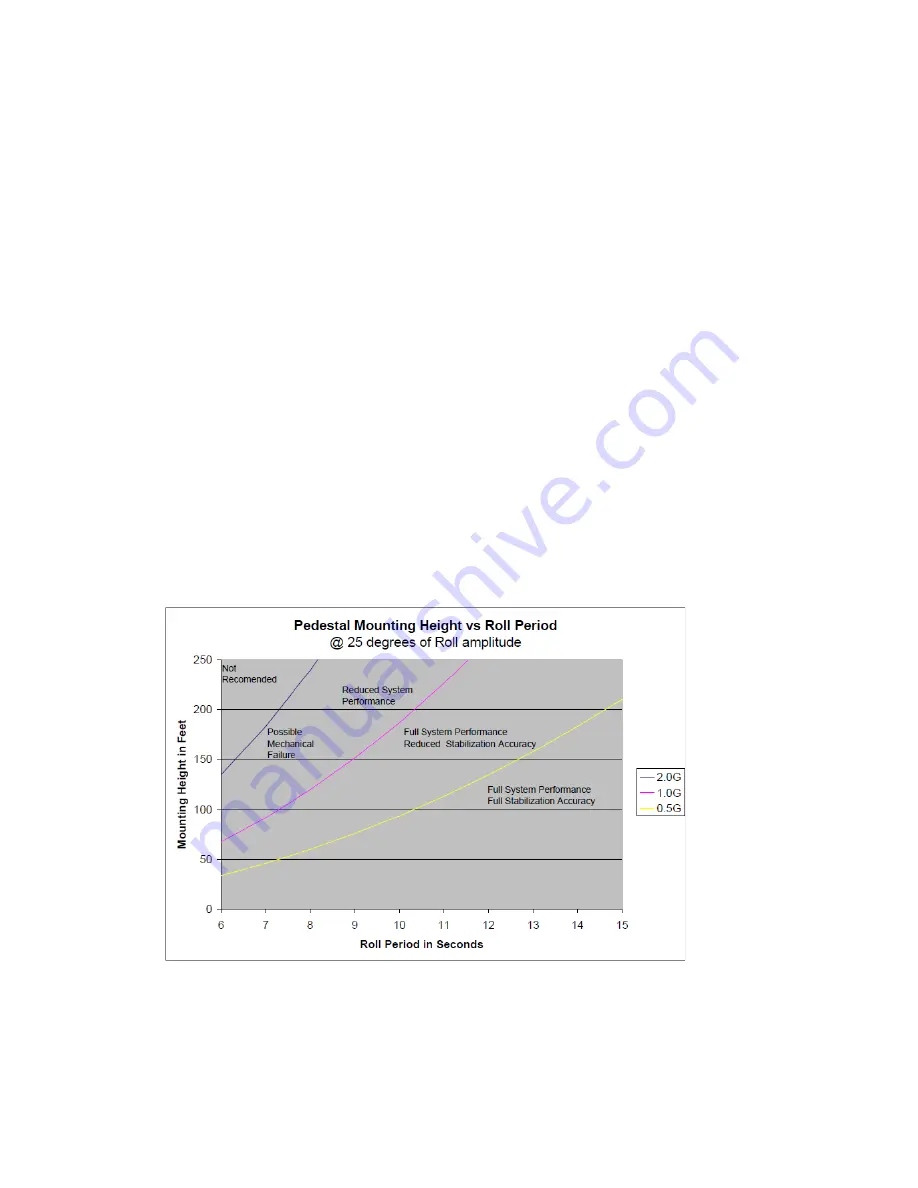
ST94-21 C/Ku-Band TVRO
Site Survey
2-3
2.4.
Mounting Height and Fore-Aft Location
Installations with mast or deck vibrations at frequencies between 2 and 15 Hertz have been identified by Sea Tel as
causing problems with the isolation systems of the ADE. Preventing problems prior to installation due to these
vibrations is one of the primary considerations in choosing where to mount the antenna.
In some installations, though, the combination of mounting height, fore-aft location and ship motion can impart
significant accelerations on the entire ADE. Installations where the ADE is situated high on the ship – usually at the
top of a mast – places the ADE is a position where the low frequency ship motion in roll and/or pitch creates two
accelerations – tangential and radial. These accelerations vary in a periodic function, out-of-phase from the ship
response to the wave motions.
Radial acceleration is the acceleration acting on the mass of the ADE pulling away from the center of the axis (roll or
pitch). In this sense, it would be a force trying to ‘pull’ the ADE away from the ship. We normally are not too
concerned with radial acceleration, since it must become far greater than gravity to have a detrimental effect on the
ADE.
Tangential acceleration is the acceleration acting on the mass of the ADE pulling across the center of the axis (roll or
pitch). This acceleration becomes a force trying to pull the ADE to the side. The tangential acceleration has an effect
on both the strength of the ADE pedestal and the tracking accuracy of the control algorithm.
The effect of tangential acceleration is felt by the structure of the ADE before it truly affects the tracking accuracy.
For instance, Sea Tel normally accepts that a tracking error of 0.1 degrees RMS at 0.5 G to be within acceptable error
margins. A 0.5 G tangential acceleration on the ADE means that ½ of the weight of the ADE is acting sideways on the
pedestal structure.
The higher up you mount the antenna above the pivot point of the ship the higher the tangential acceleration (g-
force) exerted on the antenna will be (see chart below). When the g-force exerted on the antenna is light, antenna
stabilization and overall performance will not be affected.
If the g-force exerted on the antenna is high enough (> 1 G), antenna stabilization and overall performance will be
affected.
If the g-force exerted on the antenna is excessive (1-2 Gs), the antenna will not maintain stabilization and may even
be physically damaged by the g-force.
EAR Controlled - ECCN EAR99
Summary of Contents for ST94-21
Page 4: ...EAR Controlled ECCN EAR99 ...
Page 10: ...Table of Contents x This Page Intentionally Left Blank EAR Controlled ECCN EAR99 ...
Page 123: ...EAR Controlled ECCN EAR99 ...
Page 126: ...EAR Controlled ECCN EAR99 ...
Page 139: ...EAR Controlled ECCN EAR99 ...
Page 140: ...EAR Controlled ECCN EAR99 ...
Page 141: ...EAR Controlled ECCN EAR99 ...
















































